
The AI-network can change any landscape into a sun-bleached breezy anime backdrop while retaining key details.
Opinions may vary, but personally I’ve always wished real life was just a touch more like it was in animated movies. Imagine tucking into a steaming slice of pie as rendered by Hayao Miyazaki in Kiki’s Delivery Service, or walking through the searing sunlight of Makoto Shinkai’s picturesque offerings. While the late Satoshi Kon’s content is less peaceful, there’s still something hypnotic about his swooping scenery and dream-like aesthetics. This is presumably why films from all three creatives were specially selected to train an AI program to convert photographs into anime-style art.
Jie Chen, Gang Liu and Xin Chen, students at Wuhan University and Hubei University of Technology, worked together to produce AnimeGAN — a new generated adversarial network (or GAN) to fix up the issues with existing photographic conversion into art-like images. As they stated in their original thesis, manually creating anime can be “laborious”, “difficult” and “time-consuming”, so having the option of converting photography would reduce workload and maybe even inspire more people to try their hand at producing anime.
▼ A photograph…
▼ And here’s how it looks after being put through AnimeGAN’s “Hayao” filter.
August 6 saw the release of AnimeGAN 2, which has been improved in various ways. The library of images the network draws upon to create a new interpretation has been updated with a host of new Blu-ray quality images; high-frequency artifacts have been reduced. Furthermore, it’s allegedly been made much easier to recreate the effects shown by the team in their original thesis.
Where the network really shines is in its ability to retain the features of its source images. When contrasting the AnimeGAN network to existing, state-of-the-art AI, it’s apparent that some aspects of the photographs — trees, for instance, or windows — are smoothed and blurred so much as to become unrecognizable. AnimeGAN not only retains these finer details but takes less time to do so, as long as it’s been adequately trained!
The best part is that you can test a version of the first AnimeGAN right now, with no need to download any additional software. This doesn’t allow you to differentiate between the three filters, but it still makes for a pretty cute photograph in its own right.
▼ As seen here, on my beautiful and photogenic cat.
I must admit, I can’t help but wonder about the naming of the filters. Obviously, each one stands for the image bank it was trained to use as a resource: “Hayao” is sourced from Hayao Miyazaki‘s The Wind Rises, while “Paprika” is from Satoshi Kon’s film of the same name; stills from Makoto Shinkai’s Your Name make up the “Shinkai” version. While alternating the choice of a director’s given name, surname and the film title is artsy, it does have the unintended effect of muddying both the clarity of the connection between the three filters as well as the credit for the film’s directors.
Still, since the network is apparently easy to train there’s nothing stopping people in the future from making their own Kon, Totoro, or Makoto filters; heck, maybe you could even render reality in the pastel pigments of Sailor Moon if you fed it enough images? The sky — and indeed, your own photographic skill — is the limit!
Source: GitHub/TachibanaYoshino/AnimeGAN (1, 2, 3)
Top image: GitHub/TachibanaYoshino/AnimeGAN
Insert images: GitHub/TachibanaYoshino/AnimeGAN (1, 2)
Cat images ©SoraNews24
● Want to hear about SoraNews24’s latest articles as soon as they’re published? Follow us on Facebook and Twitter
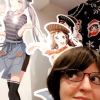
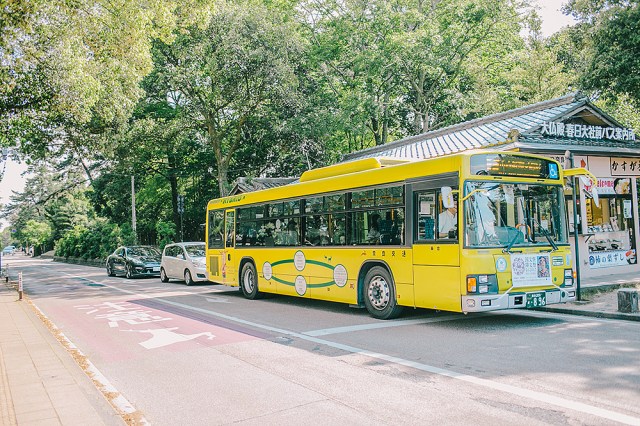
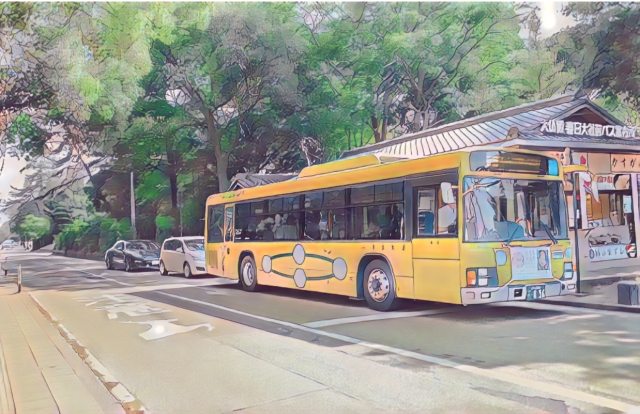
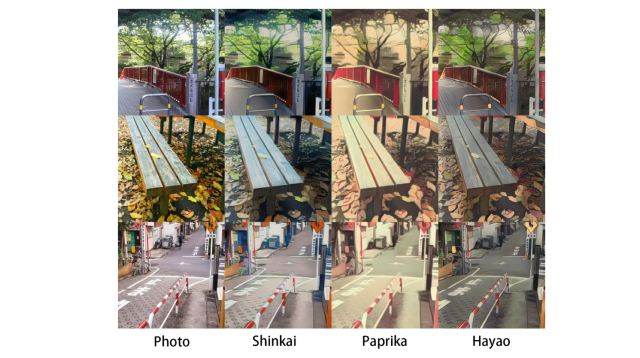
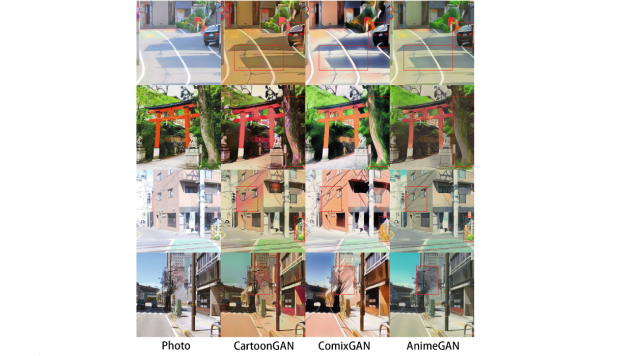
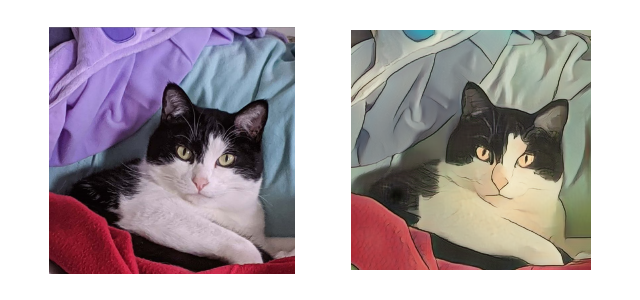
 Amazing new AI program transforms photos into gorgeous amine artwork【Video】
Amazing new AI program transforms photos into gorgeous amine artwork【Video】 Your Name reportedly becomes highest worldwide earning anime film of all time
Your Name reportedly becomes highest worldwide earning anime film of all time Makoto Shinkai or Mamoru Hosoda, who makes the better anime movies?【Survey】
Makoto Shinkai or Mamoru Hosoda, who makes the better anime movies?【Survey】 Anime hit Your Name to get Academy Award-qualifying U.S. theatrical run this year
Anime hit Your Name to get Academy Award-qualifying U.S. theatrical run this year Japanese train passenger records journey that looks like a scene from a Makoto Shinkai anime film
Japanese train passenger records journey that looks like a scene from a Makoto Shinkai anime film How to order snacks on a Shinkansen bullet train in Japan
How to order snacks on a Shinkansen bullet train in Japan Demon Slayer: Kimetsu no Yaiba gets new roller coaster attractions and food at Universal Studios Japan
Demon Slayer: Kimetsu no Yaiba gets new roller coaster attractions and food at Universal Studios Japan New samurai glasses are Japan’s latest weird must-have souvenir
New samurai glasses are Japan’s latest weird must-have souvenir Burger King Japan suddenly adds Dr. Pepper and Dr. Pepper floats to its menu nationwide
Burger King Japan suddenly adds Dr. Pepper and Dr. Pepper floats to its menu nationwide Nintendo history you can feel – Super NES, N64, and GameCube controllers become capsule toys
Nintendo history you can feel – Super NES, N64, and GameCube controllers become capsule toys High-fashion Totoro cuddle purse is like an elegant stroll in the forest【Photos】
High-fashion Totoro cuddle purse is like an elegant stroll in the forest【Photos】 Japan’s new difficult-to-drink-from beer glass protects your liver, but it’s a brutal experience
Japan’s new difficult-to-drink-from beer glass protects your liver, but it’s a brutal experience Kyoto Tower mascot termination reveals dark side behind cute Japanese characters
Kyoto Tower mascot termination reveals dark side behind cute Japanese characters New Pokémon ice cream, dessert drinks, and cool merch coming to Baskin-Robbins Japan【Pics】
New Pokémon ice cream, dessert drinks, and cool merch coming to Baskin-Robbins Japan【Pics】 To combat declining birth rate, Japan to begin offering “Breeding Visas” to foreigners
To combat declining birth rate, Japan to begin offering “Breeding Visas” to foreigners Hello, cosmetics! Clinique teams up with Hello Kitty this summer for first-time collaboration
Hello, cosmetics! Clinique teams up with Hello Kitty this summer for first-time collaboration “The most Delicious Cup Noodle in history” – Japan’s French Cup Noodle wins our heart【Taste test】
“The most Delicious Cup Noodle in history” – Japan’s French Cup Noodle wins our heart【Taste test】 Starbucks releases a cute Frappuccino and Unicorn Cake…but not in Japan
Starbucks releases a cute Frappuccino and Unicorn Cake…but not in Japan McDonald’s Japan’s Soft Twist Tower: A phantom ice cream only sold at select branches
McDonald’s Japan’s Soft Twist Tower: A phantom ice cream only sold at select branches Yabai Ramen: What makes this Japanese ramen so dangerous?
Yabai Ramen: What makes this Japanese ramen so dangerous? Finally! Nintendo Japan expands Switch 8-bit controller sales to everybody, Online member or not
Finally! Nintendo Japan expands Switch 8-bit controller sales to everybody, Online member or not Japanese government wants to build luxury resorts in all national parks for foreign tourists
Japanese government wants to build luxury resorts in all national parks for foreign tourists 10 things you should buy at 7-Eleven in Japan
10 things you should buy at 7-Eleven in Japan Studio Ghibli releases anime heroine cosplay dresses that are super comfy to wear
Studio Ghibli releases anime heroine cosplay dresses that are super comfy to wear Woman charged for driving suitcase without a license in Osaka
Woman charged for driving suitcase without a license in Osaka Studio Ghibli unveils My Neighbour Totoro miniature house model
Studio Ghibli unveils My Neighbour Totoro miniature house model Kyoto experiencing problems with foreign tourists not paying for bus fares, but not on purpose
Kyoto experiencing problems with foreign tourists not paying for bus fares, but not on purpose Fighting mild hunger with a Japanese soda that turns into jelly in the stomach【Taste test】
Fighting mild hunger with a Japanese soda that turns into jelly in the stomach【Taste test】 Studio Ghibli’s Howl’s Moving Castle tapestry unveiled in Japan for first time
Studio Ghibli’s Howl’s Moving Castle tapestry unveiled in Japan for first time McDonald’s new Happy Meals offer up cute and practical Sanrio lifestyle goods
McDonald’s new Happy Meals offer up cute and practical Sanrio lifestyle goods Sales of Japan’s most convenient train ticket/shopping payment cards suspended indefinitely
Sales of Japan’s most convenient train ticket/shopping payment cards suspended indefinitely Sold-out Studio Ghibli desktop humidifiers are back so Totoro can help you through the dry season
Sold-out Studio Ghibli desktop humidifiers are back so Totoro can help you through the dry season Japanese government to make first change to romanization spelling rules since the 1950s
Japanese government to make first change to romanization spelling rules since the 1950s Foreigner’s request for help in Tokyo makes us sad for the state of society
Foreigner’s request for help in Tokyo makes us sad for the state of society Ghibli founders Toshio Suzuki and Hayao Miyazaki contribute to Japanese whisky Totoro label design
Ghibli founders Toshio Suzuki and Hayao Miyazaki contribute to Japanese whisky Totoro label design Doraemon found buried at sea as scene from 1993 anime becomes real life【Photos】
Doraemon found buried at sea as scene from 1993 anime becomes real life【Photos】 Tokyo’s most famous Starbucks is closed
Tokyo’s most famous Starbucks is closed Princesses, fruits, and blacksmiths: Study reveals the 30 most unusual family names in Japan
Princesses, fruits, and blacksmiths: Study reveals the 30 most unusual family names in Japan My Neighbor Totoro rides the catbus gracefully onto cinema screens in China as box office hit
My Neighbor Totoro rides the catbus gracefully onto cinema screens in China as box office hit Makoto Shinkai’s Your Name passes two Hayao Miyazaki anime’s earnings, box office romp continues
Makoto Shinkai’s Your Name passes two Hayao Miyazaki anime’s earnings, box office romp continues Here’re the first actual scenes from Your Name director’s new anime, Weathering with You
Here’re the first actual scenes from Your Name director’s new anime, Weathering with You Anime Your Name passing Disney’s Frozen in Japanese box office records looks increasingly likely
Anime Your Name passing Disney’s Frozen in Japanese box office records looks increasingly likely Makoto Shinkai’s Your Name is about to do something no non-Ghibli anime has ever done
Makoto Shinkai’s Your Name is about to do something no non-Ghibli anime has ever done These dozens of beautiful Japanese idol singers aren’t just CG, they were created by AI【Video】
These dozens of beautiful Japanese idol singers aren’t just CG, they were created by AI【Video】 Japanese photographer moves people to tears with night sky photos that look like anime art
Japanese photographer moves people to tears with night sky photos that look like anime art Award-winning novelist theorizes director of Your Name didn’t have a girlfriend in high school
Award-winning novelist theorizes director of Your Name didn’t have a girlfriend in high school Your Name’s animated storyboards show anime phenomenon like you’ve never seen it before【Video】
Your Name’s animated storyboards show anime phenomenon like you’ve never seen it before【Video】 As anime Your Name comes out on home video, did it manage to beat Frozen at the box office?
As anime Your Name comes out on home video, did it manage to beat Frozen at the box office? Anime Your Name passes Princess Mononoke on all-time Japanese box office list, is now at number 3
Anime Your Name passes Princess Mononoke on all-time Japanese box office list, is now at number 3 Distributor of anime Your Name reportedly responds to rumors of live-action adaptation
Distributor of anime Your Name reportedly responds to rumors of live-action adaptation Weathering with You anime cafe opening soon with beautiful Shinkai-inspired menu items【Photos】
Weathering with You anime cafe opening soon with beautiful Shinkai-inspired menu items【Photos】 Demon Slayer Mugen Train movie finally has U.S. release date for theater and digital format
Demon Slayer Mugen Train movie finally has U.S. release date for theater and digital format Hayao Miyazaki sketches cute characters for new signboard at the Ghibli Museum【Video】
Hayao Miyazaki sketches cute characters for new signboard at the Ghibli Museum【Video】
Leave a Reply